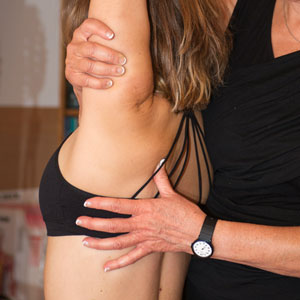What is Structural Medicine?
 Structural Medicine is a customized evaluation, treatment and collaborative team approach to an individual’s unique health issues. Distinctive to the field of structural integration, Structural Medicine directly addresses specific pathologies, painful complaints, and movement dysfunctions. It bridges well-established and proven evaluation tools found in mainstream medicine (strength, range-of-motion, postural assessment) with the latest scientific developments in alternative treatment therapies (manual therapy, myofascial release, movement education and neuromuscular re-education, energetics, and dialogue).
Structural Medicine is a customized evaluation, treatment and collaborative team approach to an individual’s unique health issues. Distinctive to the field of structural integration, Structural Medicine directly addresses specific pathologies, painful complaints, and movement dysfunctions. It bridges well-established and proven evaluation tools found in mainstream medicine (strength, range-of-motion, postural assessment) with the latest scientific developments in alternative treatment therapies (manual therapy, myofascial release, movement education and neuromuscular re-education, energetics, and dialogue).
Myofascial Length Testing
Unique to Structural Medicine is a sophisticated diagnostic procedure, myofascial length testing (MFLT). MFLT is essential for treatment of complex inter-related traumas. The objective findings empower the practitioner to formulate a customized plan for treatment of individual pathologies; provides a language to communicate intelligently and objectively with other medical professionals; provides physical measurements, pre and post treatment, to monitor or modify the treatment program, as well as enhance progress.
Extensive Evaluation
Structural Medicine involves extensive evaluation of postural alignment and movement, in order to balance the myofascial tone, length, and strength across all the major joints of the body. Through myofascial reorganization, the Structural Medicine process moves the body closer to a more efficient organization and function in gravity (the individual’s structural and functional “blueprint”).
Body Awareness and Pain Management: An Integrated Process
Through verbal dialogue and movement re-education, Structural Medicine helps uncover attitudes and unconscious beliefs that contribute to or limit postural integrity and efficient movement dynamics. By means of an integrative process of postural evaluation, MFLT, manual therapy, dialogue, movement and neuromuscular re-education, a new-found empowered awareness develops to re-align posture, movement patterns, and a sense of self. This often results in the alleviation or reduction of pain associated with the pathology.
